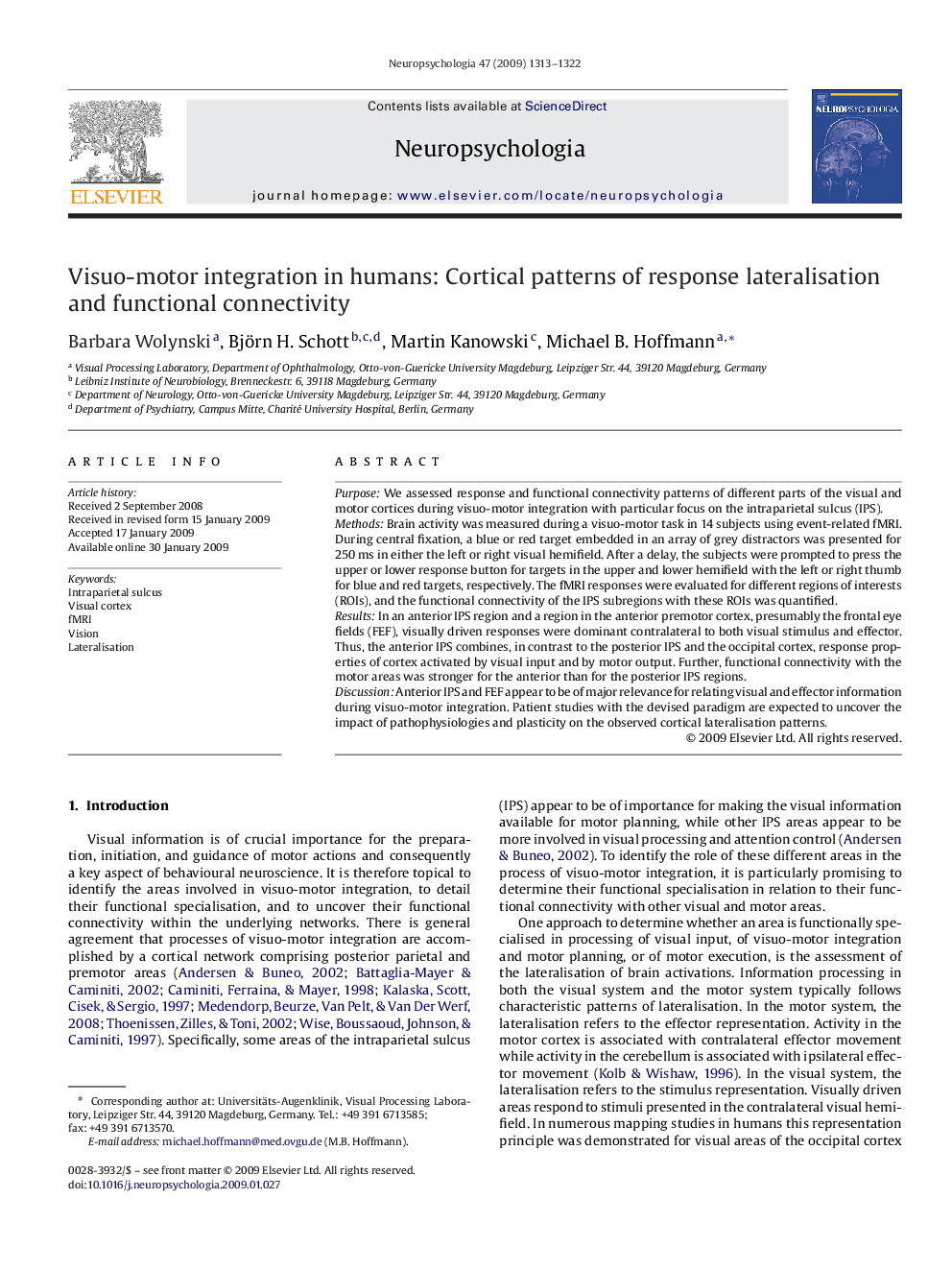| Article ID | Journal | Published Year | Pages | File Type |
|---|---|---|---|---|
| 945108 | Neuropsychologia | 2009 | 10 Pages |
PurposeWe assessed response and functional connectivity patterns of different parts of the visual and motor cortices during visuo-motor integration with particular focus on the intraparietal sulcus (IPS).MethodsBrain activity was measured during a visuo-motor task in 14 subjects using event-related fMRI. During central fixation, a blue or red target embedded in an array of grey distractors was presented for 250 ms in either the left or right visual hemifield. After a delay, the subjects were prompted to press the upper or lower response button for targets in the upper and lower hemifield with the left or right thumb for blue and red targets, respectively. The fMRI responses were evaluated for different regions of interests (ROIs), and the functional connectivity of the IPS subregions with these ROIs was quantified.ResultsIn an anterior IPS region and a region in the anterior premotor cortex, presumably the frontal eye fields (FEF), visually driven responses were dominant contralateral to both visual stimulus and effector. Thus, the anterior IPS combines, in contrast to the posterior IPS and the occipital cortex, response properties of cortex activated by visual input and by motor output. Further, functional connectivity with the motor areas was stronger for the anterior than for the posterior IPS regions.DiscussionAnterior IPS and FEF appear to be of major relevance for relating visual and effector information during visuo-motor integration. Patient studies with the devised paradigm are expected to uncover the impact of pathophysiologies and plasticity on the observed cortical lateralisation patterns.
